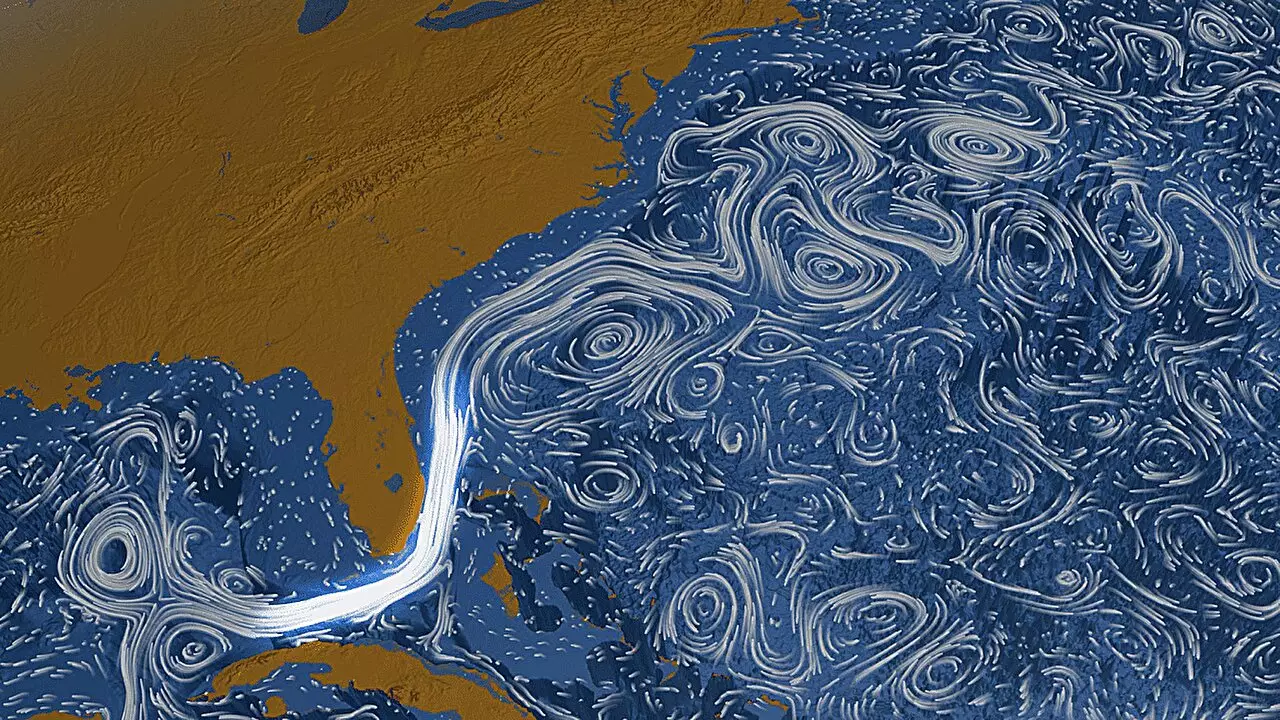Scientific inquiry into the dynamics of ocean circulation has taken on heightened urgency in light of global climate changes. Among the focal points of these studies is the Atlantic Meridional Overturning Circulation (AMOC), a critical component of the Earth’s climate system known for its role in heat, freshwater, and nutrient transport across the Atlantic Ocean. The potential weakening of the AMOC raises significant concerns, as it is intertwined with various climate phenomena, such as sea-level rise, altered weather patterns, and shifts in marine ecosystems. However, recent findings about the Florida Current, a pivotal part of the AMOC, challenge prevailing assumptions about its stability in the face of these dramatic shifts.
A recent study published in Nature Communications sheds light on the Florida Current’s behavior over the past four decades. Contrary to concerns about a weakening AMOC, the research conducted by a consortium of experts from NOAA, the University of Miami, and the National Oceanography Center in the U.K. suggests that the Florida Current has maintained a steady strength, defying predictions of decline. This finding is crucial, as the Florida Current, which originates in the Gulf of Mexico and travels along the U.S. East Coast to eventually become the Gulf Stream, is one of the fastest ocean currents on the planet and plays an integral role in the larger AMOC framework.
To obtain reliable data regarding the Florida Current, scientists have relied on the ongoing Western Boundary Time Series (WBTS) project. Launched in 1982, this initiative employs a combination of submarine cable measurements and regular hydrographic cruises to monitor ocean current transports in the area between Florida and the Bahamas. The study utilized a unique method to infer transport measurements, where electric voltages generated by salt ions in the seawater as they cross a decommissioned submarine cable served as indicators of the current’s strength. This innovative approach has provided an uninterrupted record of the Florida Current for over 40 years.
The collaboration between NOAA’s WBTS project and related institutions has paved the way for the establishment of transbasin observing arrays aimed at tracking AMOC dynamics more comprehensively. Previous interpretations of this data indicated a downward trend in the Florida Current, suggesting a possible weakening of the AMOC. However, adjustments for geomagnetic variations during the period under review have shifted the narrative significantly.
Upon re-evaluating the long-term transport data from the Florida Current and accounting for necessary corrections relating to Earth’s magnetic field changes, researchers unveiled a more hopeful picture: the current has remained stable. This revelation not only countered earlier findings suggesting a statistically significant decline but also diminished the purported negative trend observed in AMOC data. According to Dr. Denis Volkov from CIMAS, the adjustments led to a reduction in the negative trend observed in AMOC metrics by approximately 40%, rendering prior conclusions about the Florida Current’s decline less impactful.
While it remains prudent to consider that the AMOC could still be experiencing subtle changes not yet reflected in the Florida Current readings, the study posits that the current’s stability is significant, especially given the potential climate model projections indicating an upcoming 45% decline in AMOC strength by century’s end. This distinction underscores the necessity for continued, meticulous observation of oceanic conditions, as current datasets may still be too limited to yield comprehensive insights.
The findings from this research invite critical discourse about the reliance on predictive climate models without solid observational backing. While the study corroborates the Florida Current’s robustness, it simultaneously highlights the complex feedback mechanisms within oceanic systems. These systems might manifest interdecadal variability that remains undetected over shorter timeframes.
To effectively understand the intricate relationships between ocean currents and climate dynamics, there is a clear need for sustained and enhanced observational methodologies. The WBTS project’s ongoing efforts are crucial in this quest, as they provide invaluable data free for public access, standing as a framework for future research.
While concerns about a diminishing AMOC loom large in climate science discussions, the resilience of the Florida Current, as evidenced by recent studies, provides a valuable counterpoint. This stability suggests that ocean dynamics may not be as straightforward as once thought and underscores the need for continued vigilance in climate monitoring and research, especially as global temperatures rise and environmental conditions evolve.


Leave a Reply